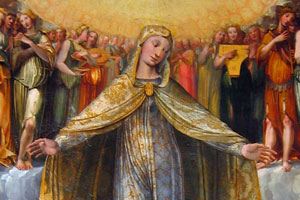Siena, the City of the Virgin
Introduction
The meaning of the city of Siena’s deep devotion to Our Lady is tied to Mary’s role in the history of salvation. The civic community, which identified totally with the Church, saw in Mary the image of itself, the sign of a humanity loved by God and saved by Him. Veneration of the Virgin here dates back so far that it is extremely difficult to establish its origin with certainty. Even before the tenth century, the area where the Cathedral now stands was dedicated to Our Lady and identified in medieval documents as the “Piano Sancte Marie.” Starting in the twelfth century, Mary was the symbol of the new commune being formed, to the point that the gifts of land and subjection of castles to Siena were made in honor of the Virgin, as attested by the formula repeated identically in the deeds and documents of the period: “Ecclesie S. Marie et populo civitatis Senensis.” From these same documents we learn that the commune required the lords of the subject lands to give a gift of wax candles every year on the Feast of the Assumption, reiterating in this way the desire to trust in Our Lady, protector of the city. The unbreakable bond between Siena and the Virgin was sealed definitively in 1260, the year of the famous battle of Montaperti, when the Sienese defeated the Florentine troops despite their military superiority. To succeed in this undertaking against Guelph . . .



